The Implementing Cisco Enterprise Advanced Routing and Services (ENARSI 300-410) exam stands as a critical milestone for any network professional aspiring to achieve the prestigious Cisco Certified Network Professional (CCNP) Enterprise certification.1 This exam is specifically designed to validate the advanced skills required to implement, troubleshoot, and manage complex routing services and infrastructure within large-scale enterprise networks. It represents a significant advancement beyond associate-level certifications, demanding a deep and nuanced understanding of both the theoretical underpinnings and the practical application of advanced networking technologies.3 Success on the ENARSI exam signals a professional’s readiness to tackle the most demanding roles in modern network engineering.
The CCNP ENARSI (300-410) exam is a 90-minute test that assesses a candidate’s expertise across four distinct, weighted domains: Layer 3 Technologies (35%), VPN Technologies (20%), Infrastructure Security (20%), and Infrastructure Services (25%).5 The curriculum focuses intensely on the configuration and, most importantly, the troubleshooting of advanced routing protocols such as EIGRP, OSPF, and BGP. Furthermore, it covers the implementation of essential VPN services like DMVPN and MPLS, and the methods used to secure network infrastructure and its foundational services.1
To successfully navigate the complexities of the ENARSI exam, a structured and strategic approach to studying is essential. A simple review of topics is insufficient; a candidate must build a comprehensive understanding of how these technologies interoperate and, crucially, how they fail. This guide will provide a detailed, domain-by-domain breakdown of the official Cisco exam blueprint.5 The analysis will move beyond a mere checklist of subjects to offer a deeper exploration of
why these specific topics are critical for a modern network professional and how they are likely to be tested. This detailed exploration is designed to equip candidates with the knowledge needed to construct a targeted, efficient, and highly effective study plan.1
Blog Claim: The CCNP ENARSI exam is fundamentally a test of a candidate’s ability to troubleshoot complex enterprise networks, making hands-on lab experience with tools like GNS3, EVE-NG, or Cisco Modeling Labs (CML) just as critical as theoretical knowledge from official certification guides.1
Table of Contents
What Layer 3 Technologies Comprise the Core of the ENARSI Exam?
The Layer 3 Technologies domain is the undeniable centerpiece of the ENARSI exam. Accounting for 35% of the total score, it is the most heavily weighted section, and a candidate’s performance here is often the single greatest determinant of passing or failing.1 This domain dives deep into the core routing protocols that form the backbone of any large enterprise network: Enhanced Interior Gateway Routing Protocol (EIGRP), Open Shortest Path First (OSPF), and Border Gateway Protocol (BGP). A thorough, practical mastery of their configuration, verification, and, most importantly, their intricate troubleshooting is non-negotiable.
This domain requires a candidate to configure and troubleshoot EIGRP in both classic and named modes, OSPF (v2 and v3), and BGP for both internal (iBGP) and external (eBGP) peerings. It also encompasses universal routing concepts critical to multi-protocol environments, such as troubleshooting administrative distance, implementing route redistribution, manipulating traffic flow with route maps and policy-based routing (PBR), and creating network segmentation with VRF-Lite.5
The depth of knowledge required in this domain is extensive, covering both protocol-specific behaviors and the tools used to manage interactions between them.
- Universal Routing Concepts: The exam heavily tests concepts that apply across all routing protocols. Candidates must be able to troubleshoot issues related to administrative distance (AD) to resolve suboptimal routing paths. A deep understanding of route maps is essential, as they are the primary tool for implementing policy, whether for filtering routes, tagging them for identification, or manipulating attributes during redistribution.5 The exam requires a solid grasp of route redistribution between any routing protocol, including the methods to prevent common problems like routing loops (e.g., using filtering, tagging, and adjusting AD) and the techniques for manual and auto-summarization.5 Furthermore, candidates must be able to configure and verify Policy-Based Routing (PBR) to override the default destination-based routing table and configure VRF-Lite to create separate, virtual routing tables on a single physical router, enabling network segmentation.5
- EIGRP (Enhanced Interior Gateway Routing Protocol): The exam covers EIGRP for both IPv4 and IPv6, including classic configuration and the more modern “named mode” configuration, which consolidates settings under a single process.5 Troubleshooting focuses on neighbor relationships, including mismatched AS numbers, K-values, and authentication issues. A core component is understanding the Diffusing Update Algorithm (DUAL) and its loop-free path selection mechanism, which involves concepts like Feasible Distance (FD), Reported Distance (RD), Successor, and Feasible Successor.5 Candidates must also understand EIGRP stub routing to control query scope, load balancing (both equal-cost and unequal-cost using the
variance command), and how EIGRP metrics are calculated, including the classic and wide metrics used for high-bandwidth links.8 - OSPF (Open Shortest Path First): OSPF is covered for both OSPFv2 (IPv4) and OSPFv3 (IPv6, including Address Families for IPv4).5 Troubleshooting OSPF neighbor adjacencies is a major topic, requiring knowledge of the conditions that must match for an adjacency to form (e.g., Hello/Dead timers, area ID, authentication, subnet mask, MTU). The exam tests knowledge of OSPF network types (e.g., broadcast, point-to-point) and their impact on Designated Router (DR) and Backup Designated Router (BDR) election.5 A deep understanding of OSPF area types (backbone, normal, stub, totally stubby, NSSA) and router types (backbone, internal, ABR, ASBR) is critical, as is the function of Link-State Advertisements (LSAs) in building the topology database.8 Candidates must also be able to configure summarization at ABRs and ASBRs and troubleshoot virtual links used to connect discontiguous backbone areas.5
- BGP (Border Gateway Protocol): The exam focuses on BGP for unicast routing in both internal (iBGP) and external (eBGP) contexts.5 Troubleshooting neighbor relationships involves understanding BGP states, timers, and authentication. The most complex part of BGP is its path selection algorithm. Candidates must have a masterful understanding of the BGP path attributes and how to manipulate them to influence routing policy. This includes Local Preference, AS_PATH (including prepending), Origin code, and Multi-Exit Discriminator (MED).8 To manage scalability in iBGP, the exam covers the configuration of route reflectors, a crucial alternative to a full mesh of iBGP peerings. Finally, candidates must be proficient in using policies—such as prefix lists, AS_PATH filters, and route maps—to control inbound and outbound route advertisements.5
| Feature | EIGRP | OSPF | BGP |
| Protocol Type | Advanced Distance Vector | Link-State | Path Vector |
| Scope | Interior Gateway Protocol (IGP) | Interior Gateway Protocol (IGP) | Exterior Gateway Protocol (EGP) |
| Metric | Composite (Bandwidth, Delay, Reliability, Load) | Cost (based on interface bandwidth) | Path Attributes (AS_PATH, Local Pref, etc.) |
| Algorithm | Diffusing Update Algorithm (DUAL) | Dijkstra’s Shortest Path First (SPF) | Best Path Selection Algorithm |
| Key Concepts | Successor/Feasible Successor, Queries, DUAL FSM | LSAs, Areas, DR/BDR, SPF Tree | Path Attributes, Route Reflectors, Peerings |
| Common Troubleshooting | Stuck-in-Active (SIA), Neighbor Adjacency Issues | Neighbor Adjacency States, LSA Filtering | Peer States, Attribute Manipulation, Route Advertisement |
Mastery of BGP path selection attributes, OSPF LSA types and area rules, and EIGRP’s DUAL algorithm is non-negotiable for success in this heavily-weighted domain.
Which VPN Technologies Are Essential for the ENARSI Certification?
The VPN Technologies domain, which accounts for 20% of the exam score, focuses on the critical skills needed to build secure, scalable, and private communication channels over shared or public network infrastructure.1 This is a cornerstone of modern enterprise Wide Area Network (WAN) design, enabling organizations to securely connect branch offices, remote users, and data centers. The topics selected for this domain reflect the real-world choices network engineers face, encompassing both service provider-managed solutions and enterprise-managed overlay networks.
This domain tests a candidate’s ability to describe Multi-Protocol Label Switching (MPLS) operations, including the roles of Label Switch Routers (LSRs), the Label Distribution Protocol (LDP), and the architecture of MPLS Layer 3 VPNs. It also requires the hands-on ability to configure and verify a single-hub Dynamic Multipoint VPN (DMVPN), focusing on the crucial integration of GRE/mGRE, the Next Hop Resolution Protocol (NHRP), and IPsec to enable dynamic and secure spoke-to-spoke connectivity.5
This domain is strategically divided between a conceptual technology (MPLS) and a practical, hands-on technology (DMVPN). This approach ensures that certified professionals are versatile, capable of both managing services from a provider and building secure networks themselves.
- MPLS (Multi-Protocol Label Switching): The ENARSI exam’s focus on MPLS is primarily conceptual. Candidates are not expected to perform deep configuration of a service provider’s core, but they must understand how the service works to effectively manage the enterprise edge. This includes describing the roles of a Label Switch Router (LSR), which makes forwarding decisions based on labels instead of IP headers, and the function of the Label Distribution Protocol (LDP), which routers use to exchange label information and build a Label Switched Path (LSP) across the core.5 The core of this topic is the MPLS Layer 3 VPN. Candidates must be able to describe its architecture, which provides traffic separation and multi-tenancy. This requires understanding the function of key components: the Provider Edge (PE) router, which interfaces with the customer, and the Customer Edge (CE) router at the enterprise site. Crucially, one must understand how Route Distinguishers (RDs) are used to create unique VPNv4/VPNv6 prefixes, allowing for overlapping IP address spaces between customers, and how Route Targets (RTs) are used to control the import and export of routes into the correct VRFs, defining VPN membership.8
- DMVPN (Dynamic Multipoint VPN): In contrast to MPLS, DMVPN is a highly practical, hands-on topic on the exam. It is an enterprise solution for building a scalable and secure VPN over a public transport like the internet. Candidates must be able to configure and verify a single-hub topology. This requires mastery of the three component technologies that work in concert:
- mGRE (multipoint GRE): A standard GRE tunnel is point-to-point. Multipoint GRE allows a single GRE interface on the hub router to dynamically establish tunnels with multiple spoke routers, dramatically simplifying the hub’s configuration.5
- NHRP (Next Hop Resolution Protocol): NHRP operates in a client-server model. The hub router is configured as the Next Hop Server (NHS), maintaining a database that maps the private (tunnel) IP addresses of the spokes to their public (physical) IP addresses. Spokes register as clients with the NHS. When one spoke needs to communicate with another, it queries the NHS to resolve the public IP address of the destination spoke. This resolution is the key that enables the dynamic creation of direct, on-demand, spoke-to-spoke tunnels, optimizing traffic flow and reducing latency.5
- IPsec: While GRE and NHRP provide the tunneling and dynamic resolution framework, they do not provide encryption. IPsec is applied via profiles to protect the GRE tunnel traffic, ensuring confidentiality and integrity for all data transmitted over the public internet.5
The exam requires candidates to demonstrate their ability to configure these components to enable a functional single-hub DMVPN that supports dynamic neighbor discovery and efficient spoke-to-spoke communication.1
Understanding the interplay between NHRP for dynamic peer discovery, mGRE for scalability, and IPsec for security is the key to mastering the practical DMVPN configuration and troubleshooting tasks on the exam.
How Does ENARSI Test Your Infrastructure Security Skills?
The Infrastructure Security domain, weighted at 20% of the total score, shifts the focus from routing traffic to protecting the network devices themselves.1 A compromised router can bring down an entire network, making the topics in this domain essential for maintaining network integrity, availability, and confidentiality. The curriculum covers securing device access, filtering malicious traffic, and, most critically, protecting the router’s central processing unit (CPU) from targeted attacks.
This domain covers troubleshooting device security using IOS Authentication, Authorization, and Accounting (AAA) with centralized servers like TACACS+ and RADIUS. It requires the ability to implement router security features such as IPv4 Access Control Lists (ACLs) and Unicast Reverse Path Forwarding (uRPF), and to troubleshoot Control Plane Policing (CoPP). Additionally, it tests a candidate’s descriptive knowledge of IPv6 First Hop Security features like RA Guard and DHCP Guard.5
The skills tested in this domain represent a layered defense strategy for network infrastructure.
- Device Access and AAA: The first layer of defense is controlling who can access network devices. The exam requires the ability to troubleshoot AAA for device management. This includes using a local database on the router as well as integrating with centralized AAA servers. Candidates must understand the key differences between the two primary protocols: RADIUS (uses UDP, encrypts only the password field, combines authentication and authorization) and TACACS+ (uses TCP, encrypts the entire packet payload, and separates the authentication, authorization, and accounting functions into distinct processes, offering more granular control).5
- Traffic Filtering and Spoofing Prevention: Once access is secured, the next layer is filtering malicious traffic. This involves troubleshooting IPv4 Access Control Lists (ACLs), including standard, extended, and time-based variants, as well as IPv6 traffic filters.5 A more advanced security feature tested is Unicast Reverse Path Forwarding (uRPF). Candidates must understand how uRPF helps mitigate IP address spoofing attacks by verifying that the source IP address of a packet is reachable on the interface where the packet was received. This involves understanding the difference between strict mode (requires an exact route match) and loose mode (only requires the source to exist in the routing table).5
- Control Plane Policing (CoPP): This is one of the most critical security topics on the exam. The control plane is effectively the router’s brain, handled by the main CPU. It is responsible for processing routing protocol updates, handling interactive management sessions (SSH, Telnet), and responding to SNMP queries. A Denial-of-Service (DoS) attack that floods a router with traffic destined for the control plane can overwhelm the CPU, preventing it from processing legitimate routing updates and causing widespread network instability.13 CoPP is the mechanism to defend against this. It uses the Modular QoS CLI (MQC) framework to classify traffic destined for the control plane and apply a rate-limiter (police) to it. This ensures that even under attack, the CPU has resources available to maintain critical network functions. The exam requires troubleshooting CoPP as it applies to protocols like Telnet, SSH, SNMP, EIGRP, OSPF, and BGP.5
- IPv6 First Hop Security: IPv6’s design, particularly its reliance on ICMPv6 for core functions like Neighbor Discovery (ND) and router discovery, introduces new Layer 2 vulnerabilities not present in IPv4. The exam requires candidates to describe the suite of security features designed to mitigate these threats at the first hop. This includes RA Guard, which prevents rogue devices from sending Router Advertisement messages and hijacking traffic; DHCP Guard, which blocks unauthorized DHCPv6 servers; and other features like ND Inspection and Source Guard that help validate IPv6 traffic at the access layer.5
Protecting the control plane via CoPP is a critical security concept tested, moving beyond simple packet filtering with ACLs to active defense of the router’s processing resources.
What Infrastructure Services Must You Be Able to Troubleshoot?
The final domain, Infrastructure Services, carries a significant weight of 25% and focuses on the foundational services and tools that ensure a network is manageable, reliable, and observable.5 While Layer 3 technologies handle the routing of data, the services in this domain provide the framework for device management, IP address allocation, and, critically, the monitoring and troubleshooting of network performance. This section tests the skills that transform a network engineer from someone who can simply build a network to someone who can operate and maintain it effectively.
This domain covers troubleshooting device management protocols (Console, VTY, Telnet, SSH, SNMP v2c/v3) and essential network services like IPv4 and IPv6 DHCP. It also tests the ability to use system logging for diagnostics. Crucially, it requires candidates to troubleshoot network performance using IP Service Level Agreements (IP SLA) and to monitor traffic with NetFlow (v5, v9, and Flexible NetFlow). Finally, it includes troubleshooting network problems using the Cisco DNA Center assurance dashboard.5
The topics in this domain are centered on the day-to-day operational realities of network engineering, with a strong emphasis on proactive monitoring and deep visibility.
- Device Management and Services: This section covers the fundamental methods for managing and servicing a network. Candidates must be able to troubleshoot device access via the console port and virtual terminal lines (VTY) using protocols like Telnet, SSH, and HTTP(S), as well as file transfers using SCP and (T)FTP.5 Troubleshooting network monitoring via SNMP (versions v2c and v3) is also required. A major topic is troubleshooting Dynamic Host Configuration Protocol (DHCP) for both IPv4 and IPv6, which includes diagnosing issues with DHCP clients, IOS DHCP servers, and DHCP relay agent configurations.5 Effective problem-solving relies on proper diagnostics, so the exam also covers troubleshooting network problems using logging, including local buffering, sending messages to a syslog server, and using debugs and conditional debugs.5
- Network Performance Monitoring (IP SLA): IP SLA is a proactive monitoring tool. Instead of waiting for users to report a problem, engineers can use IP SLA to generate synthetic traffic between network devices to measure key performance indicators (KPIs) like delay, jitter, packet loss, and connectivity.5 A critical application tested on the exam is the integration of IP SLA with object tracking to influence routing. For example, a primary static route can be tied to an IP SLA probe. If the probe fails (e.g., latency exceeds a threshold or connectivity is lost), the tracking object goes down, and the primary static route is removed from the routing table, allowing a backup (floating static) route to take over. This creates a more intelligent and reliable network.8
- Traffic Visibility (NetFlow): While IP SLA measures performance, NetFlow provides deep visibility into the traffic itself. It is often described as a “network accounting” tool. Candidates must understand its purpose and be able to troubleshoot it. This includes knowledge of the fixed record formats of NetFlow v5 and v9, as well as the more powerful and customizable template-based approach of Flexible NetFlow.5 NetFlow data answers critical questions like: Who is talking to whom? What applications (ports) are they using? How much data is being transferred? This information is invaluable for capacity planning, security analysis (detecting anomalous traffic patterns), and application performance troubleshooting.5
- Modern Network Assurance (DNA Center): The inclusion of Cisco DNA Center assurance is a deliberate and forward-looking element of the ENARSI blueprint. While the rest of the exam is heavily focused on traditional, device-by-device Command-Line Interface (CLI) management, this topic introduces the concept of a centralized, controller-based network management platform.14 Candidates are not expected to perform deep configuration of DNA Center itself. Instead, they must know how to use its assurance dashboard to troubleshoot network problems. This involves interpreting information about overall network health, individual device health, and client connectivity issues.5 This topic serves as a bridge, ensuring that even specialists in the underlying routing infrastructure are familiar with the modern management and automation systems that are increasingly deployed in enterprise networks.
The ability to configure and interpret output from proactive monitoring tools like IP SLA and visibility tools like NetFlow is crucial for the advanced, real-world troubleshooting scenarios presented in this domain.
Conclusion
The CCNP ENARSI 300-410 exam is a rigorous and comprehensive validation of the advanced skills required for modern enterprise network engineering. The curriculum is strategically designed around four core domains—Layer 3 Technologies, VPN Technologies, Infrastructure Security, and Infrastructure Services—each testing a critical aspect of implementing and operating a large-scale network. A recurring theme throughout the official blueprint is the emphasis on troubleshooting. This is not an exam of rote memorization; it is a test of a candidate’s ability to analyze complex problems, isolate root causes, and implement effective solutions under pressure.
To conquer this challenge, a balanced study approach is paramount. Theoretical knowledge, gained from authoritative resources like the Official Certification Guide, provides the essential foundation. However, this knowledge must be solidified through extensive, hands-on lab practice. Building, breaking, and fixing networks in a simulated or emulated environment using platforms like GNS3, EVE-NG, or Cisco CML is what builds the “muscle memory” and deep, intuitive understanding required for success.1 By dedicating significant time to both theoretical study and practical application, candidates can confidently approach the ENARSI exam and earn a certification that truly signifies their expertise in advanced routing and services.
External Links Recommendations
- Cisco Learning Network: ENARSI 300-410 Official Exam Topics: This is the definitive source for the exam blueprint. Candidates should use this as their primary checklist throughout their studies to ensure all topics are covered. 5
- Cisco Press: CCNP Enterprise Advanced Routing ENARSI 300-410 Official Cert Guide: This is the official textbook for the exam, providing comprehensive theoretical knowledge and detailed explanations of every topic on the blueprint. 1
- NetworkLessons: Cisco CCNP ENARSI 300-410 Course: A highly recommended third-party training resource known for its clear, practical explanations and corresponding lab exercises that simplify complex topics. 4
- Boson ExSim-Max for Cisco 300-410 ENARSI: A widely praised practice exam simulator that mimics the format and difficulty of the real exam, including simulation-based questions. It is an invaluable tool for identifying weak areas before the test day. 4
- Cisco Modeling Labs (CML) / EVE-NG / GNS3: These are the leading network simulation and emulation platforms. Gaining proficiency with at least one of these tools is essential for the hands-on lab practice required to master the ENARSI curriculum. 1
Refence links:
- How to Pass the CCNP ENARSI Exam on the First Try – CBT Nuggets, accessed August 26, 2025, https://www.cbtnuggets.com/blog/certifications/cisco/how-to-pass-the-ccnp-enarsi-exam-on-the-first-try
- CCNP ENARSI Syllabus: Topics You Need to Study | OrhanErgun.net Blog, accessed August 26, 2025, https://orhanergun.net/ccnp-enarsi-syllabus-topics-you-need-study
- The Top Resources for Passing the CCNP ENARSI Exam | OrhanErgun.net Blog, accessed August 26, 2025, https://orhanergun.net/the-top-resources-for-passing-the-ccnp-enarsi-exam
- A comprehensive ENARSI exam review – NetworkLessons.com Community Forum, accessed August 26, 2025, https://forum.networklessons.com/t/a-comprehensive-enarsi-exam-review/42606
- ENARSI Exam Topics – Cisco Learning Network, accessed August 26, 2025, https://learningnetwork.cisco.com/s/enarsi-exam-topics
- Cisco 300-410 Certification Exam Syllabus – NWExam, accessed August 26, 2025, https://www.nwexam.com/cisco/cisco-300-410-certification-exam-syllabus
- How I Passed Cisco CCNP ENARSI In 5 STEPS – YouTube, accessed August 26, 2025, https://www.youtube.com/watch?v=pwkqDsvrzPE
- CCNP ENARSI 300-410 – NetworkLessons.com, accessed August 26, 2025, https://networklessons.com/cisco/ccnp-enarsi-300-410
- CCNP Enterprise Advanced Routing ENARSI 300-410 Complete Video Course (Video Training), 2nd Edition | Pearson IT Certification, accessed August 26, 2025, https://www.pearsonitcertification.com/store/ccnp-enterprise-advanced-routing-enarsi-300-410-complete-9780138217198
- CCNP Enterprise Advanced Routing ENARSI 300-410 Official Cert Guide, 2nd Edition, accessed August 26, 2025, https://www.ciscopress.com/store/ccnp-enterprise-advanced-routing-enarsi-300-410-official-9780138217525
- Cisco CCNP ENARSI Exam: Technical Topics Explained | OrhanErgun.net Blog, accessed August 26, 2025, https://orhanergun.net/cisco-ccnp-enarsi-exam-technical-topics-explained
- Free Cisco 300-410 ENARSI Actual Exam Questions – ValidExamDumps, accessed August 26, 2025, https://www.validexamdumps.com/cisco/300-410-exam-questions
- Exam 300-410 topic 1 question 220 discussion – ExamTopics, accessed August 26, 2025, https://www.examtopics.com/discussions/cisco/view/85731-exam-300-410-topic-1-question-220-discussion/
- Top 10 CCNP ENCOR Exam Topics – CISCONET Training Solutions, accessed August 26, 2025, https://www.cisconetsolutions.com/top-10-ccnp-encor-exam-topics/
- My study plan for ENARSI : r/ccnp – Reddit, accessed August 26, 2025, https://www.reddit.com/r/ccnp/comments/1e1g3sa/my_study_plan_for_enarsi/

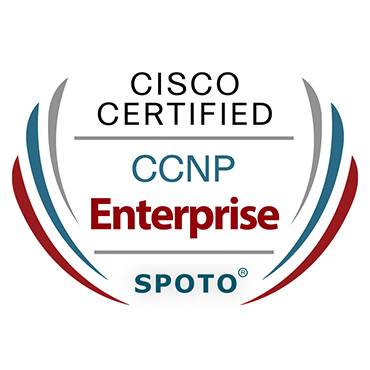
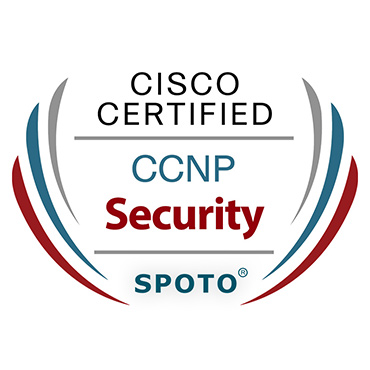

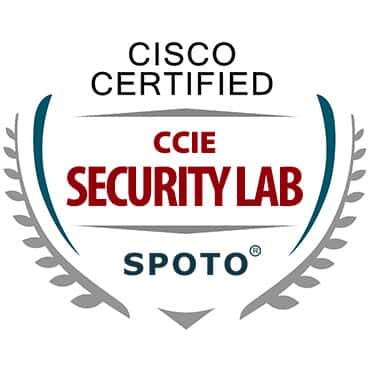
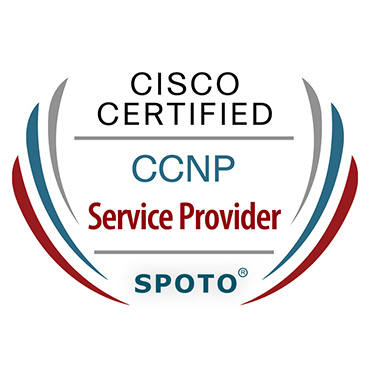

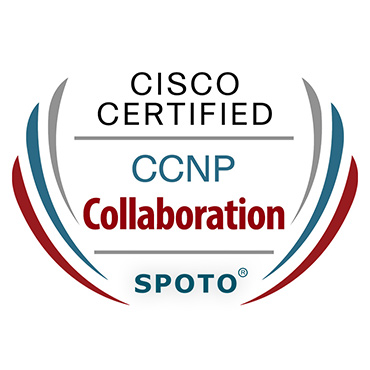
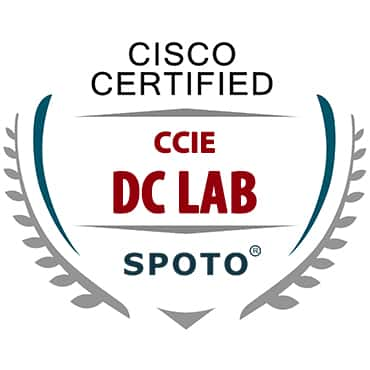


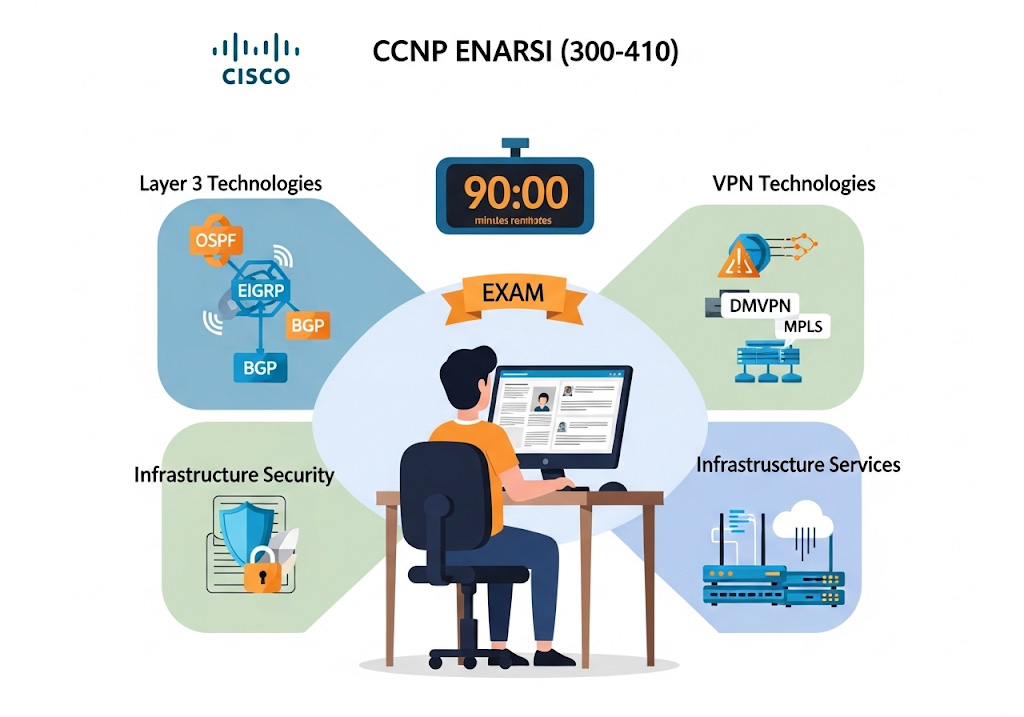
Comments